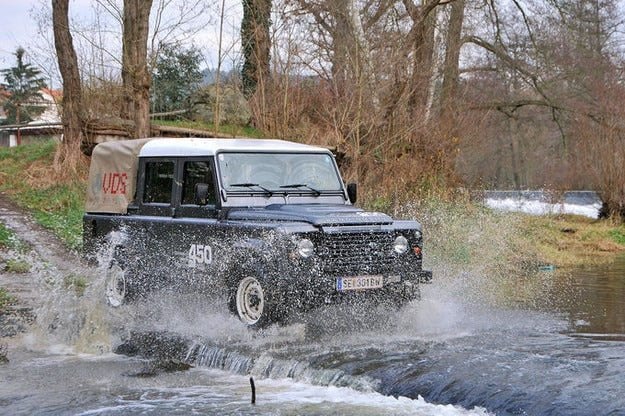
We rode: Kawasaki ZX-10R Ninja
The Yas Marina circuit in Abu Dhabi, where Formula 1 racers compete every year, is illuminated by bright spotlights at night. This is a typical car race track, so it has an above average number of short corners and posh and very long planes. I can say that this is a great platform for testing all the new products offered by the new dozen Kawasaki. Because a somewhat insidious base, flavored with desert sand applied to the pores of the asphalt, and minimal excursion zones also mean to some extent unpredictable conditions on the road.
Of course, Kawasaki did not need a drastic change after all the superbike titles in recent years, but since we are talking about prestige, technical progress and the Japanese, for whom high technology is of great importance, it is obvious that the engineers did not. Get an extra weekend under the leadership of champions Jonathan Rea and Tom Sykes, rolling up your sleeves and constructing the next generation of liter supercars that we saw at the first race in Australia were a complete success.
New Kawasaki in search
The ZX-10R Ninja is very similar to its predecessor, which underwent major changes in 2011. But the essence of the changes lies in what is hidden from view. Show front forks are not part of these hidden changes, they are trendy, and with the optional oil chamber they offer a MotoGP look and exceptional adjustment options. Electronics do not interfere with their work yet, so they offer the optimal solution for everyone who intends to go to races where active suspension is prohibited. However, I do not comment at all on their work. The entire front end is incredibly responsive and lightweight. Part of the credit also goes to the excellent Bridgestone Battlax Hypersport S21 tires, which are otherwise designed for high-performance sports bikes and primarily for road use. However, they also performed well on the track. There, strong acceleration in second gear and under full load meant a good test of the tires, and a problem for the electronic driving aids and the suspension itself was also suggested by the long plane that also curves to the left when shifting from third to fourth gear. There, at a speed of 180 kilometers per hour, the driver leans into a bend, accelerates and shifts into sixth gear, where at 260 kilometers per hour he brakes sharply to second gear, followed by a combination of short movements to the left and right. turns. The brakes were heavily loaded and a pair of die-cast Brembo monobloc cams gradually gripped a pair of 330mm discs. Despite braking so hard that my wrist ached after every 20 minutes of driving on the highway, the ABS never even worked, and I'm not sure what would have to happen to get this modern biker guardian angel on the track. ... Well, I definitely wish the brakes, which didn't have to be pressed so hard, would stop you quickly and efficiently. Towards the end of the last ride, when I was especially testing the braking effect of very late braking, I felt a release and the front brake lever had to be pressed much harder for the same braking effect. However, it is true that such an extreme road trip will not go even in a dream, and therefore this only applies to the race track, where you brake twice from 260 to 70 kilometers per hour, of course, at the shortest possible distance. It is not easy.
In these combinations of fast and slow turns, I was able to test how the rear six wheel slip control works. A Kawasaki ECU with a 32-bit processor measures all of the data and transmits it to the rear wheel using an algorithm. Power of 200 "horsepower" or, more accurately, 210 "horsepower" at top speeds, when air is literally pushed into the intake manifolds and then into the combustion chamber through the RAM-AIR system, is brutal. 998cc four-cylinder engine The 16-valve Cm is anemic in the low rpm range and has no real life, but when the rpm rises above 8.000 rpm, it comes alive, and the Ninja lives up to its reputation: uncompromising, brutal acceleration and of course a decent dose of adrenaline. Thus, the Kawasaki ZX-10R Ninja is quite picky about fast driving as you have to pay attention to revs and correct gearing in a very well-designed drivetrain that is shorter due to its racing nature. Shifting gears using the fast gear shifting system, as is the case with Superbikes, of course plays a decisive role in this. The throttle lever should always be fully open, while a short but determined movement of the toes on the left foot is sufficient and the ninja is already racing forward even faster. All together, of course, without using a clutch. However, the clutch must be used when downshifting and when starting off. For all racing enthusiasts, there is also a start control that allows you to accelerate optimally to the first corner of the race track when the green light comes on.
The engine has been improved with a new generation: shorter, smaller, lighter, with a completely new head and cylinders, new exhaust valves and a camshaft design. For greater efficiency, they also changed the combustion chamber, air filter and installed a completely new suction unit with nozzles with a diameter of 47 millimeters. Sykes and Rea wanted to improve handling and reduce the effects of inertia, so they reduced the inertia of the main shaft by 20 percent, which is stronger but also lighter.
All of this is very easy to manage on the track. Here they have taken a really big step forward, as the Kawasaki is not a smaller bike. Although the swingarm is longer, the wheelbase is 1.440 millimeters shorter. But with the new frame and suspension, everything works extremely harmoniously, and the Ninja easily cuts into aggressive lines and follows commands closely due to the wide and comfortable steering wheel. The whole package is being conducted calmly, extremely smoothly. Moreover, late braking and trajectory holding, when my concentration dropped and I had just made a mistake while driving, did not cause me panic or fear, as I always found support in finding everything. Exciting!
Since I am not one of the smallest - 180 centimeters, I also really appreciate the comfortable driving position. Few heavy duty sport bikes have such a relaxed and uncomfortable position. With the new aerodynamic armor top, they achieved less drag, and with neatly placed windshield vents, they reduced swirling air behind it, meaning a calmer helmet, clearer vision, and easier tracking of the perfect line. . Even at the top speed I reached on the race track, with my helmet pressed against the fuel tank, my head remained still. And when you lift with upper body braking, there was no pushback from the airflow against your chest. A big plus for armor and aerodynamics!
It is because of all the above facts that I have a pretty definite feeling that the Kawasaki ZX-10R Ninja can be one of the most comfortable motorcycles for long distance riding and road use. Kawasaki made a good compromise here, as it's not radical enough to limit its judicious use to racetracks only.
With five engines and electronic aids (Kawasaki calls it the S-KTRC) and three different engine power levels, you can adapt it to any road conditions and of course take full advantage of the sporty character on the track.
The green beast will be yours for € 17.027, and Kawasaki also offers slightly better equipped and special racing replica models and graphics with graphics from winter tests, which are of course a little more expensive.
That being said, the top ten takes a slightly different path than, for example, the radically sporty Yamaha, but this path is also correct and is looking for those who intend to take these beautiful sports bikes even further than just a short trip to nature. corners or coffee with fellow motorcyclists. Now we are still waiting for Honda and Suzuki to tell us how they envisioned the next generation of supercars.
Text: Petr Kavchich
Photo: BT, plant

